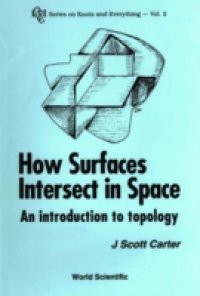This is a book of marvelous pictures that illustrates standard examples in low dimensional topology. The text starts at the most basic level (the intersection of coordinate planes) and gives hands on constructions of the most beautiful examples in topology: the projective plane, Poincare's example of a homology sphere, lens spaces, knotted surfaces, 2-sphere eversions, and higher dimensional manifolds. The text carefully explains the importance of the examples and the techniques without being bogged down in a morass of technicalities.Chapter 1 opens with the classification of orientable surfaces, and the meaning of space. Chapter 2 discusses examples of non-orientable surfaces including models of the projective plane and the Klein bottle. Chapter 3 discusses how curves fit on surfaces and gives a general discussion of knotted strings in space. In Chapter 4, some examples of other 3-dimensional spaces are described. These include the 3-dimensional sphere, lens spaces, and the quaternionic projective space. In Chapter 5, the author reviews the movie techniques of studying surfaces in 4-dimensions. He shows how to move among the standard examples of Klein bottles, and he gives a “movie move” decomposition of turning the 2-sphere inside out. In the final Chapter, higher dimensional spaces are examined from the same elementary point of view.The book is a guide book to a wide variety of topics. It will be of value to undergraduates who want to learn geometric topology and to graduate students who want examples with which they can make computations and who need an elementary description of topological spaces. Finally, the book should be interesting to other scientists and mathematicians who want to learn some examples of topological spaces.Contents: Surface and SpaceNon-orientable SurfacesCurves and KnotsOther Three Dimensional SpacesSurfaces in 4-DimensionsHigher Dimensional Spaces Readership: Undergraduates, graduates and mathematicians.Key Features:Comprises written versions of tutorials on some of the most important developments in recursion theory and set theory in recent years, full versions of which are yet to appearContains expository articles that serve as useful guides for first-year and advanced graduate students as well as researchers in logic to the current active areas of research in recursion theory and set theory

